Lead overhead: Pilots and people living near airports agree, lead in aviation fuel is no good. Why is it still there?
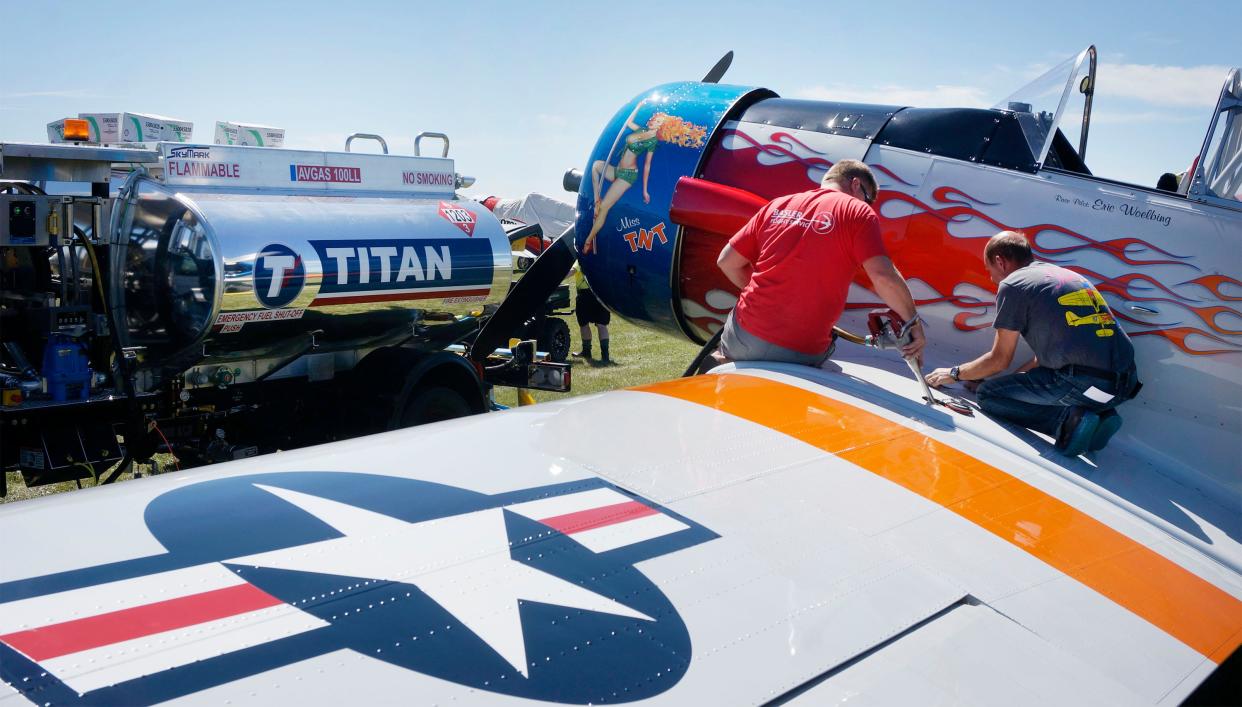
OSHKOSH - Among the thousands of aviation enthusiasts at the Experimental Aircraft Association's AirVenture convention this week are a few who are discussing an oft frowned-upon topic in the general aviation community: the environmental impacts of their activities.
Greenhouse gas emissions from general aviation — which excludes airline and military operations but includes just about everything else — is microscopic in the grand scheme of global emissions. While aviation altogether accounts for 1.9% of global greenhouse gas emissions, general aviation is estimated to contribute less than 1%. Piston-engine aircraft, which are the majority in general aviation, contribute even less at 0.13%.
But the issue with general aviation aircraft isn't greenhouse gas emissions. It's lead emissions.
"In the ecological world, the most glaring, absolutely crazy thing aviation does is cling to tetraethyl lead," said Tony Williams, a long-time EAA member, pilot, and expert on electric power for vehicles and aircraft.
Tetraethyl lead is an additive in aviation gasoline, called avgas for short, to prevent premature detonation, or "engine-knocking," in piston-engine aircraft. The most common avgas is 100 octane low lead, or 100LL.
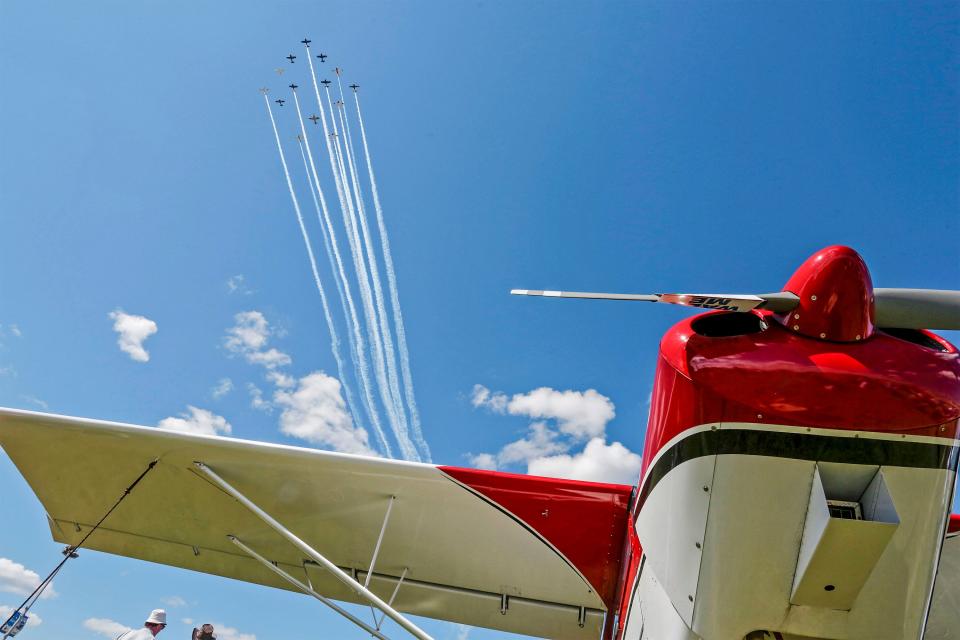
"Leaded fuel has been illegal in cars in the United States for decades," Williams said. "The (U.S. Environmental Protection Agency) has dropped the ball on stopping that in aviation."
A 2021 study by the National Academies of Sciences, Engineering, and Medicine using EPA data from 2017 found that piston-engine general aviation aircraft accounted for about 70% of lead air emissions in the United States.
Although the EPA has been looking into regulating airborne lead emissions from avgas since the 1990s, it wasn't until this year that the EPA announced it would review whether lead emissions from piston-engine aircraft threaten the health of those who live close to airports where these aircraft operate. The EPA is on track to release its draft "endangerment finding" in October, with the final finding published in 2023.
The review will focus on children, who can suffer from "irreversible and life-long health effects" due to even low levels of lead in their blood. According to a 2020 EPA analysis, over 5 million people live within 500 meters of an airport runway, over 360,000 of which are children 5 years old and under. What's more, over 160,000 children attend schools within 500 meters of an airport runway.
The EPA's announcement in January was in response to a 2021 petition on which the Town of Middleton's Board of Supervisors was a signatory.
RELATED: How a Middleton airport has become a battleground over lead pollution
About a month after the EPA made its announcement, the U.S. Department of Transportation’s Federal Aviation Administration announced the EAGLE initiative in collaboration with industry leaders to "safely eliminate the use of leaded aviation fuel by the end of 2030 without adversely affecting the existing piston-engine fleet."
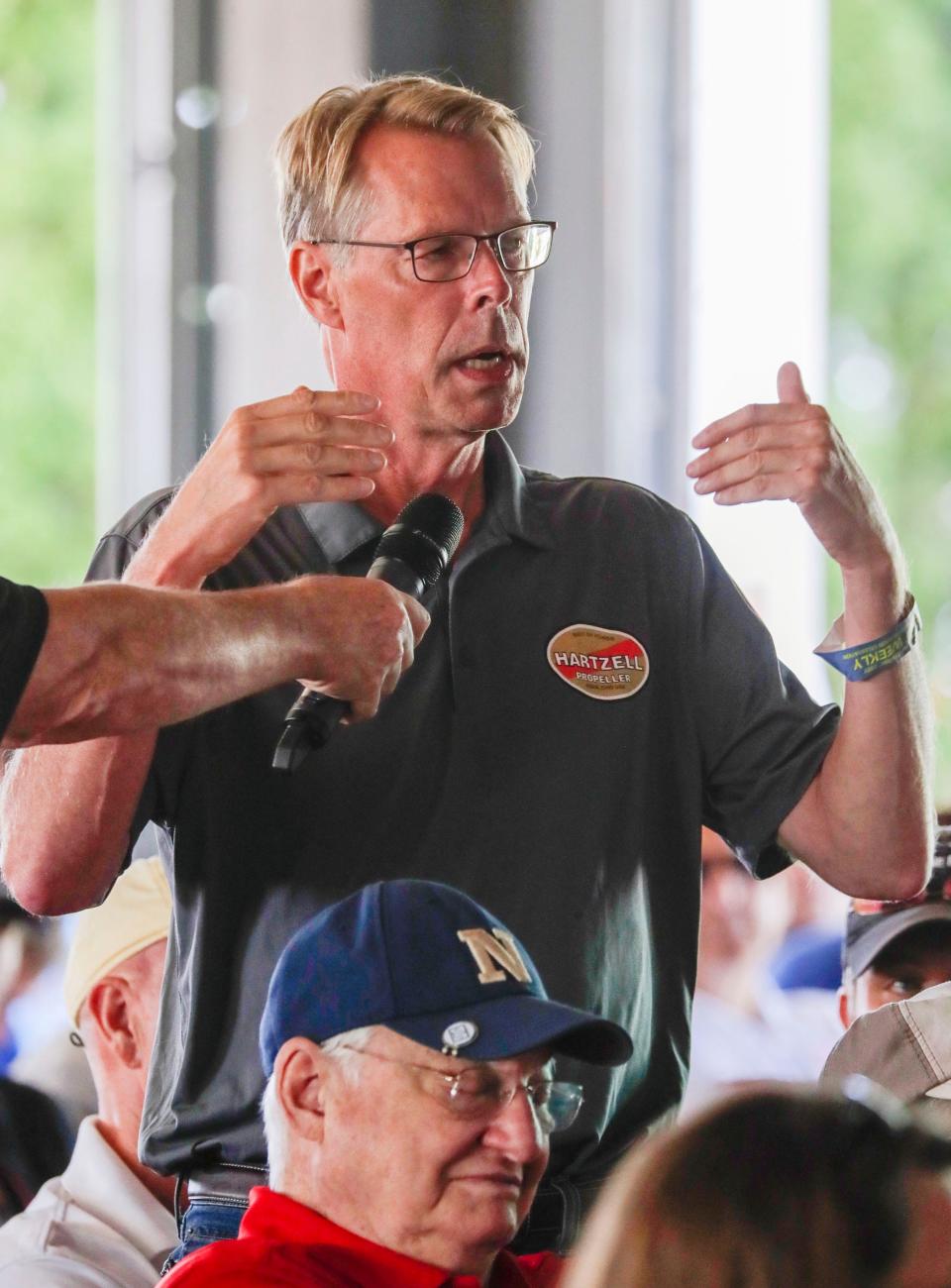
"What do they all want? The status quo," Williams said of the government and industry companies who he believes have dragged their feet on the issue. "They're not doing anything revolutionary. They've been studying this issue for decades. Literally decades of studies and meetings."
George Braly calls it "loving the problem," inspired by a quote from Michael Kraft, then-senior vice president and general manager of Lycoming Engines, at AirVenture in 2010: "We have to stop loving the problem and just fix it."
Braly is the co-founder of a small Oklahoma-based general aviation engineering company with fellow aeronautical engineer Tim Roehl: General Aviation Modifications Inc. (GAMI).
GAMI made history at last year's AirVenture when it announced it was awarded supplemental type certificates (STCs) by the FAA for its high-octane unleaded avgas, G100UL, meaning that the fuel could be used in a limited number of engines and corresponding aircraft in replacement of 100LL. In other words, GAMI successfully developed the first 100-octane unleaded avgas approved by the FAA.
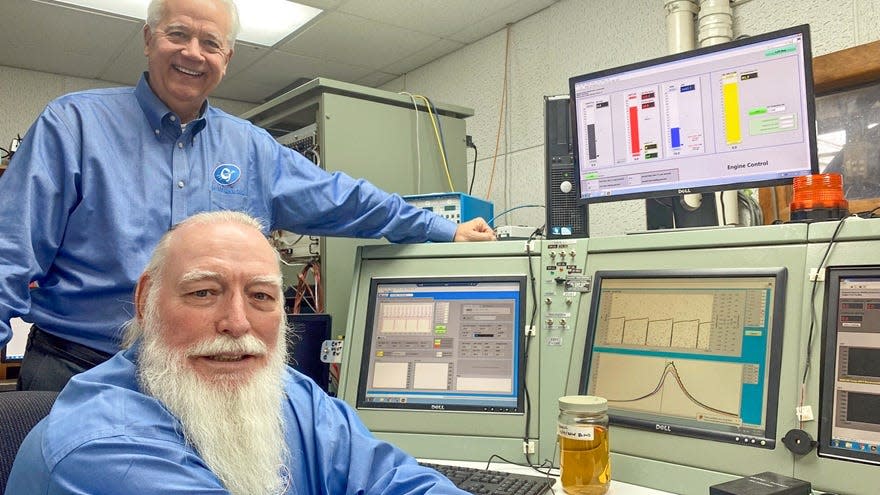
In the United States, other companies have also been developing 100-octane unleaded alternatives for 100LL, including Shell, Phillips 66, and Swift Fuels, but GAMI is the first — and still the only — to get its approved by the FAA.
An accomplishment over a decade in the making
Since 2010, GAMI has been working to develop its G100UL for piston-engine general aviation aircraft as a "drop-in replacement" for 100LL — a feat private industry has been trying to accomplish for three decades, Braly said.
The government first threw its hat in the ring in 2012 with the FAA's Piston Aviation Fuel Initiative "to develop a path forward for the identification, evaluation and deployment of the most promising unleaded replacements for 100 low lead aviation gasoline." It would do so by evaluating unleaded replacement fuels and identifying the best ones through two-phase testing.
Braly said that GAMI was asked to be a part of PAFI but elected to stay out of it because they had already began a certification project with the FAA. Additionally, GAMI found issues with some of the initiative's technologies and equations.
"Their whole scientific method had a bunch of fundamental flaws to it," Braly said.
Some, including Braly, see PAFI as the predecessor to the recently-announced EAGLE initiative.
"PAFI collapsed of its own failure 2 or 3 years ago, but they're trying to resurrect it and reconstitute it as a sub-part of the EAGLE initiative," Braly said. "You can't get a straight answer out of anybody as to how this is really supposed to work."
According to a presentation at AirVenture in 2016, PAFI was to be completed in 2018.
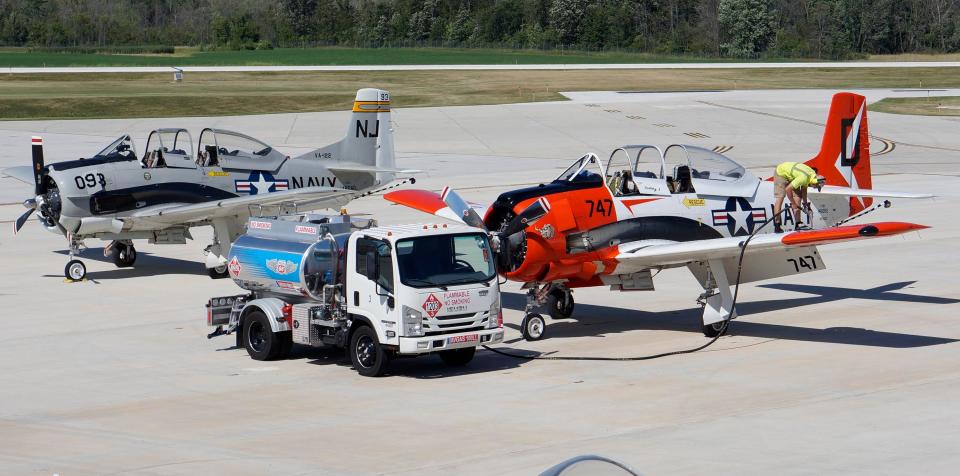
At a similar briefing on Monday at this year's AirVenture, Maria Di Pasquantonio of the FAA said the EAGLE initiative will support two paths to fuel authorization: one through the continuation of PAFI and another through the STC process. While PAFI is driven by the FAA and industry stakeholders, the STC process is proprietary to the applicant.
Instead of participating in PAFI when it was created, GAMI decided to follow the FAA's approved model list (AML) STC process, a long-established process for expanding which makes and models of engines and aircraft a modification, like unleaded avgas, can be applied to. The initial STC is usually issued for only one or a few makes and models in the attached AML, but then more are added after additional review.
This was the plan for GAMI's high-octane unleaded avgas. GAMI would complete additional certifications, providing more data to significantly expand the engine and aircraft AMLs. Eventually, the lists would encompass all of the relevant aircraft and engines in the FAA's database, meaning GAMI's G100UL could be used "fleet-wide."
GAMI kept its end of the bargain. In collaboration with the FAA, it completed more tests to provide data to significantly expand the engine AML, and in October, the FAA expanded it to include over 600 additional, mostly low-compression engines.
The next, and perhaps final, step was then fleet-wide authorization, expanding the lists to include the remaining high-compression engines and all their corresponding aircraft.
GAMI continued to complete the certifications needed for fleet-wide authorization, Braly said, and after months of work — which included a full FAA review of the 12-year project — one branch of the FAA said they were done.
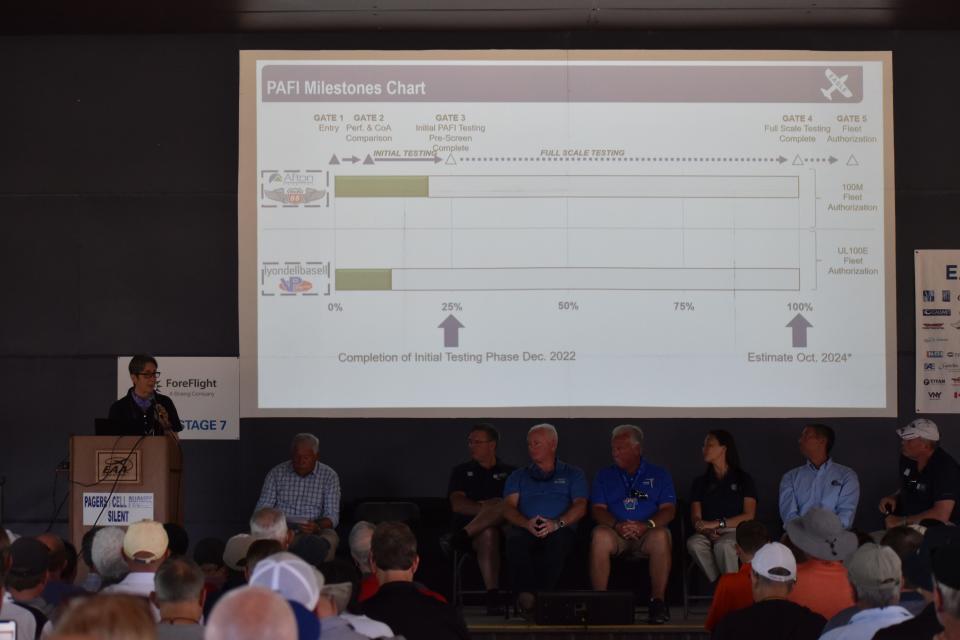
In early March, GAMI received a series of three emails from the Wichita Aircraft Certification Office, a regional FAA branch, which Braly shared with USA TODAY NETWORK-Wisconsin.
In the first two emails, the Wichita ACO confirmed that GAMI "completed all necessary 'showings' and 'findings' of compliance" and concluded that the revised AMLs were just awaiting FAA headquarters’ approval and signature. In a third email that summarized what the Wichita ACO had sent to the FAA headquarters in Washington, D.C., the Wichita ACO shared the relevant federal regulation and deemed immediate approval as “warranted.”
"Allow us to issue the approval of the STC AML expansion as GAMI is entitled to, so that we may finish our project," the third email said.
But the FAA headquarters has yet to do so.
"We've been hung up ever since," Braly said. "And the politics has become the controlling factor, not the technology."
About three weeks after the Wichita ACO sent GAMI these emails, he said, the FAA began yet another review of GAMI's project, this time by convening a technical advisory board. This is a process normally conducted early on in a certification project, not once all compliance findings have been completed.
In an email to USA TODAY NETWORK-Wisconsin, the FAA confirmed it created the advisory board to "evaluate the safety of the fuel since the applicant proposed using the fuel near fleet-wide."
"This review panel provided the FAA program office a number of technical recommendations," it said. "The program office is currently working with GAMI to resolve any open technical issues."
The FAA announced it was expanding the use of such boards on Feb. 28, five days after it announced the EAGLE initiative. The most notable technical advisory board in recent history was the one conducted on the Boeing 737 MAX passenger airliner, which was grounded in 2019 following two crashes that led to the deaths of 346 people.
Some in the general aviation community suspect the FAA is being extra cautious following its certification failures with the Boeing 737 MAX. Both Boeing and the FAA came under intense scrutiny for design flaws with the flight stabilization program.
Braly said the technical advisory board process is the result of a Congressional mandate that limited the applicability of it to large transport aircraft weighing more than 150,000 pounds, which is beyond the scope of GAMI's G100UL project. Additionally, he said the board did not follow the requirement of scheduling an initial briefing with GAMI at the beginning of the process. As a result, the panel did not understand the fundamental science and methodology that supported the prior compliance findings, he said.
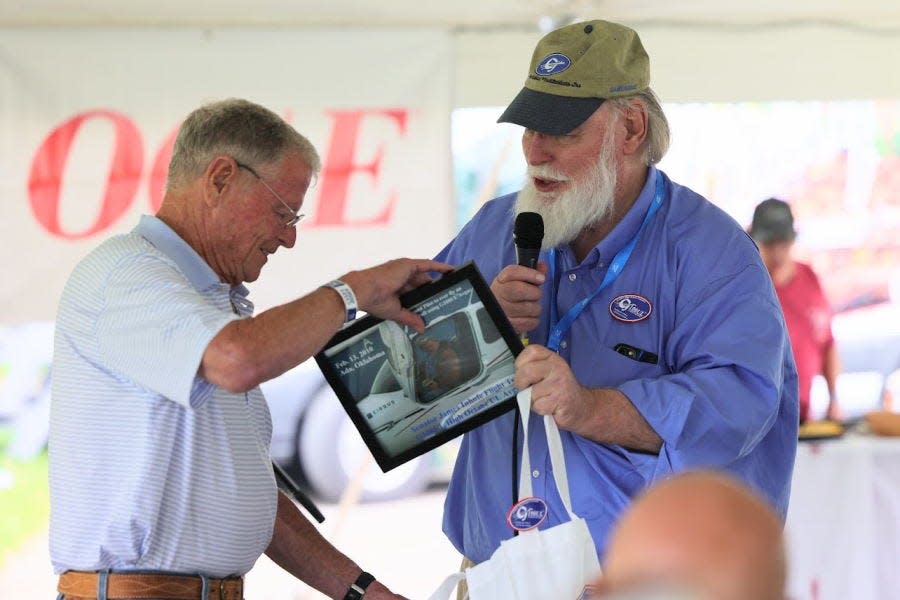
Although GAMI was told the final technical advisory board report would be completed by May 1, it wasn't until June 7 that the Wichita ACO received it, Braly said. During that time, he had email correspondence with the Wichita ACO — also verified by USA TODAY NETWORK-Wisconsin — confirming that any recommendations from the report would be resolved by the Wichita ACO in their independent discretion and engineering judgement. After that, the Wichita ACO would be able to sign and deliver the expanded STCs.
That does not appear to be the case, as Braly said they are now "in limbo" following the final report. He had a meeting Monday morning at AirVenture with FAA officials, and he said they're planning to visit GAMI in Ada, Oklahoma, the second week of August to discuss the board's findings. There's still no timeline to finish the project, however.
'It's not going to be history repeating itself'
Despite dealing with over a decade of red tape, Braly remains optimistic that GAMI will soon be fueling all piston-engine general aviation aircraft with its G100UL.
"I'm very hopeful that we'll get there," he said.
At Monday's EAGLE briefing, there was only time for four questions from audience members. Three of those questions were related, either directly or indirectly, to the status of GAMI's certifications.
One was from a pilot from the San Martin Airport in California who said he is among hundreds of other pilots at that airport and the Reid-Hillview Airport who can no longer buy leaded avgas. In response to a study that linked the ongoing use of leaded avgas with elevated lead exposure for the 13,000 children living near Reid-Hillview Airport, the Santa Clara County Board of Supervisors voted to stop the sale of the fuel at its airports in January.
The pilot wanted to know when the STCs "presently in existence" will be put through so they "can at least have some alternative" for their airplanes.
Among the panelists at the briefing was Lirio Liu, the FAA's new executive director of aircraft certification service. She replaced Earl Lawrence, who left the FAA in the late spring.
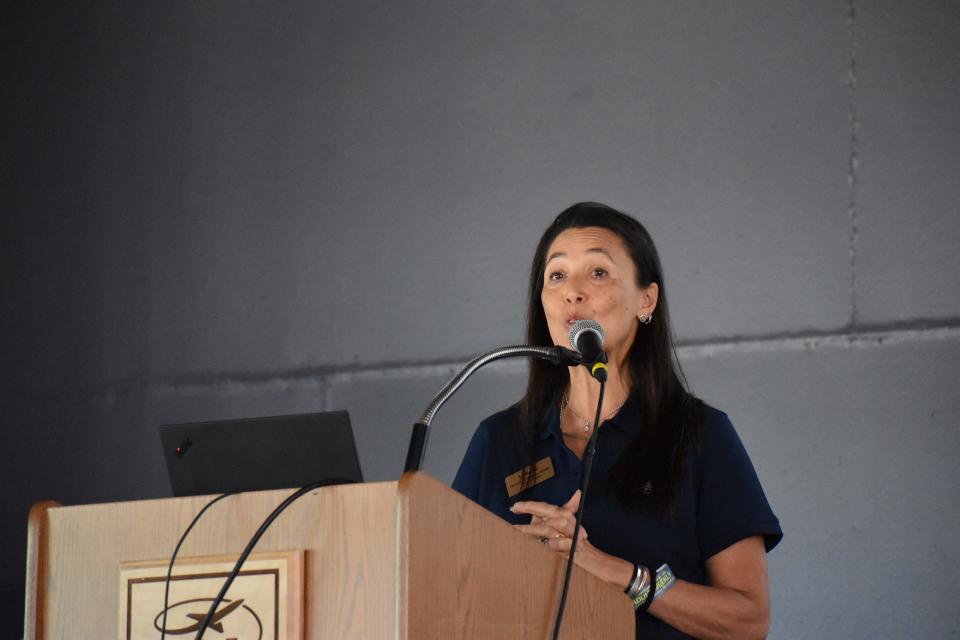
In response to the California pilot's question, she said she's had a lot of conversations with the STC applicants and appreciates their candidness.
After spending the last two months reviewing the history of the unleaded avgas STCs, she said, she recognizes that it's "imperative that we actually have a clear path to get to the endpoint."
"It's not going to be history repeating itself," she said. "I'm not going to put a date on it, but I will say that it's got my full attention, it's got the attention of my staff, and I will be working with them to be sure we're accountable in a timely manner."
GAMI will be hosting a forum at AirVenture today from 2:30 to 3:45 p.m. to provide an "update on the FAA's continued refusal to sign the completed STCs for GAMI's G100UL unleaded avgas project."
Contact Kelly Smits at (920) 431-3632 or ksmits@gannett.com. Follow her on Twitter at @kellymsmits.

CONTINUE YOUR SUPPORT: Thanks to our subscribers for making this coverage possible. Be sure to download our app on the App Store or Google Play. Follow us on social media: Facebook | Twitter | Instagram | Newsletters
This article originally appeared on Oshkosh Northwestern: EAA AirVenture: Lead in aviation fuel among topics at Oshkosh fly-in

